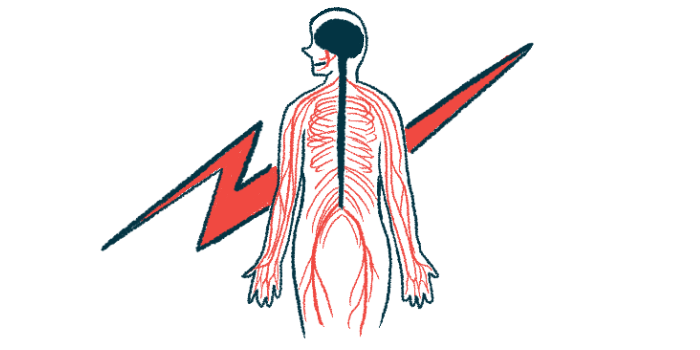2 sisters with FA recover sensory nerve activity with Skyclarys
Cases indicate therapy can have 'favorable impact' on peripheral nerves

Skyclarys (omaveloxolone) may improve the function of peripheral sensory nerves — those found outside the brain and spinal cord, which detect sensations and help provide the brain with information — in people with Friedreich’s ataxia (FA).
That’s according to a new report from Slovenia describing the cases of two sisters with FA who recovered sensory nerve signals after six months of treatment with Skyclarys.
“The presented case … indicates that [Skyclarys] can have a favourable impact on peripheral nerves,” the researchers wrote.
The case was described in a letter to the editor, titled “Sensory nerve action potential reappearance after omaveloxolone treatment in patients with Friedreich ataxia,” which was published in the journal Clinical Neurophysiology.
FA is caused by mutations in the FXN gene that lead to insufficient production of frataxin, a protein vital for mitochondrial function. Mitochondria comprise a cell’s energy production center. Muscle and nerve cells are especially vulnerable to energy deficiency, causing FA symptoms such as coordination and balance issues, known as ataxia, as well as muscle weakness and neurological problems.
Skyclarys is the first approved treatment for people with FA. It is designed to activate nuclear factor erythroid 2-related factor 2 (Nrf2), a protein that promotes mitochondrial function. The oral therapy also promotes antioxidant responses and prevents inflammation. As such, the treatment is expected to slow or prevent disease progression.
Improvements seen with 6 months of Skyclarys treatment
According to the researchers, no data are available on how Skyclarys impacts the peripheral nerves. These nerves connect the central nervous system to the rest of the body, carrying sensory information to the brain, and motor commands from the brain to muscles and organs.
Here, a team from the University Medical Centre Ljubljana described the cases of two sisters, ages 26 and 22, who regained sensory nerve signals after being treated with Skyclarys for six months.
For both women, the first symptom of FA was gait ataxia that began during adolescence. Gait is a person’s manner of walking, which is unique to each individual.
Before beginning treatment, both sisters showed gait and limb ataxia, abnormal eye movements, impaired muscle reflexes, and slightly reduced vibration sensation in their toes, without other sensory deficits. The older sister also had difficulty speaking.
Neither of them had diabetes, a condition marked by high blood sugar, nor cardiomyopathy, a disease that affects the heart muscles.
Sensory nerve conduction studies were performed on the sural nerves, which are located in the lower leg and reflect sensory nerve function. In these tests, the electrical response produced by the nerves — known as the sensory nerve action potential, or SNAP — is recorded. Measuring the SNAP helps determine how well the sensory nerves are working and can reveal signs of nerve damage.
Motor nerve conduction studies were performed on the median and ulnar nerves in the forearm and hands. These nerves control sensation and movement in the hands. Testing was also done on the tibial and fibular nerves that innervate the muscles of the leg and feet.
Before starting Skyclarys, SNAPs were absent in the ulnar and sural nerves of both women, but they became detectable after six months of treatment. Sensory nerve conduction velocities increased in the median nerve after treatment, although they remained below normal levels, and reached normal levels in the sural nerves.
The SNAP amplitude, which is an indicator of the number of sensory nerve fibers conducting signals, remained below normal values.
“Before treatment ulnar and sural SNAPs were absent, while after [six] months of treatment SNAPs were recordable,” the researchers wrote.
According to the team, “the post-treatment improvement in cellular metabolism may restore nerve conduction enough to recover the function which is reflected in the reappearance of SNAPs and better motor nerve conduction.”







